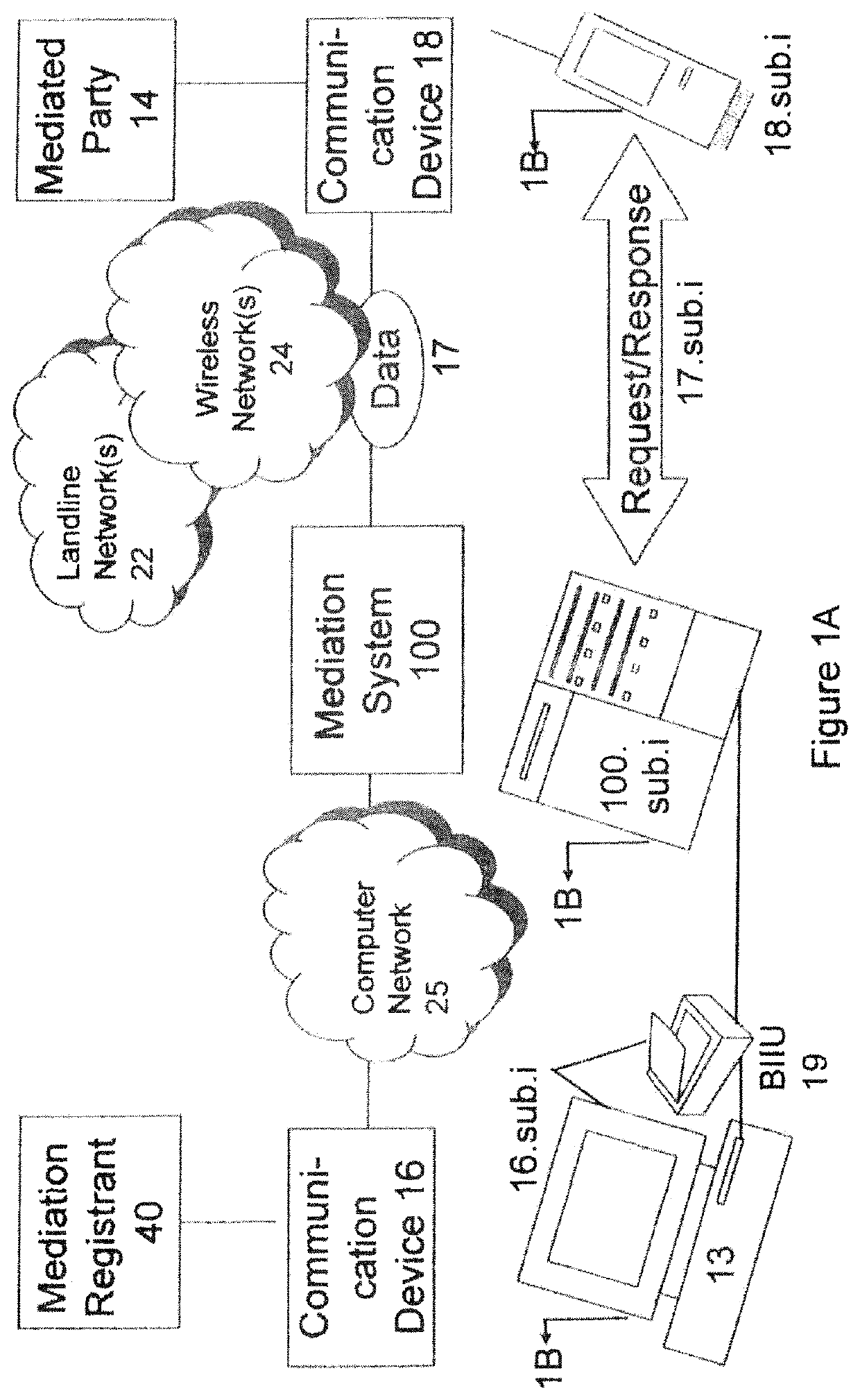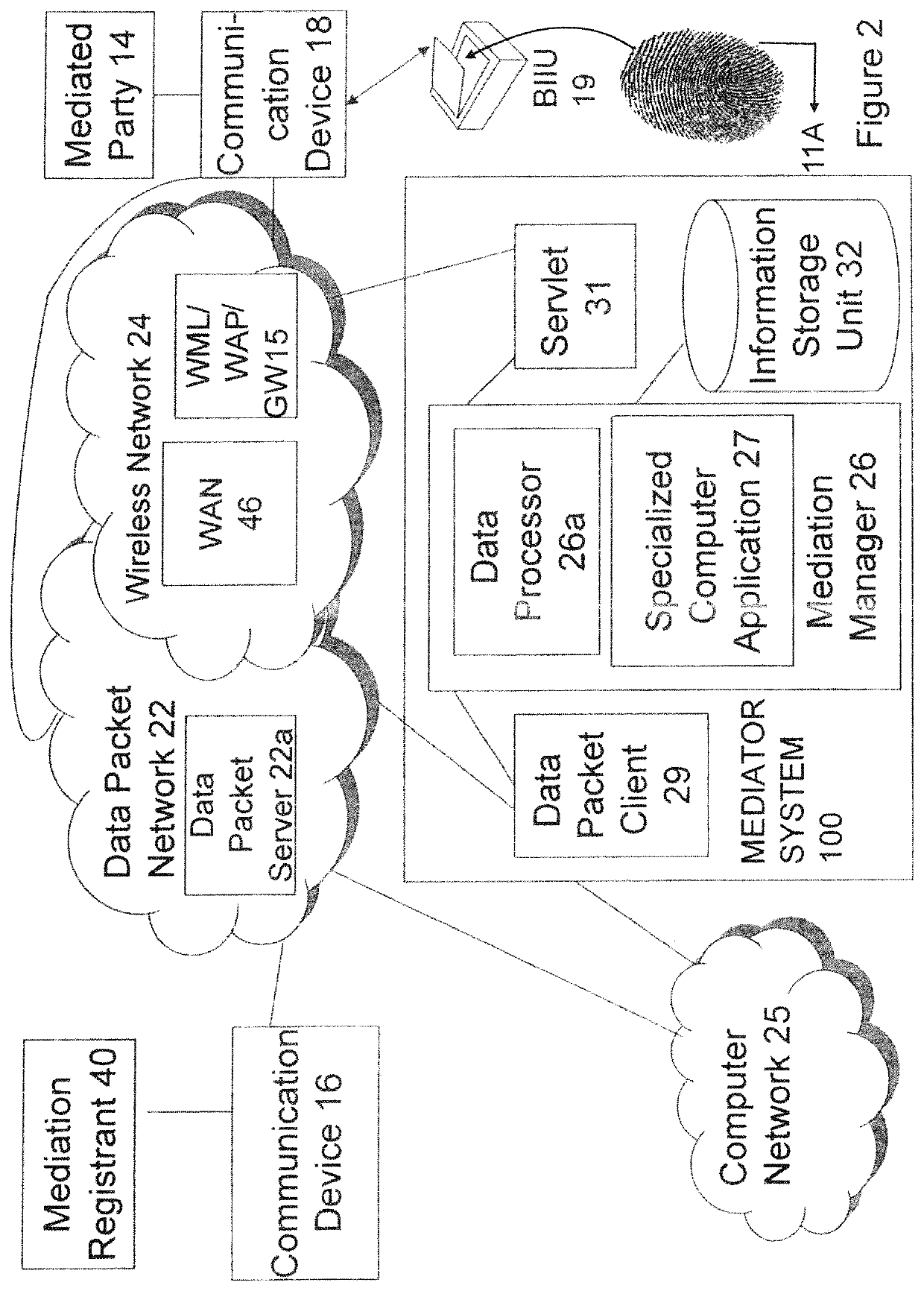Specially adapted serving networks to automatically provide personalized rapid healthcare support by integrating biometric identification securely and without risk of unauthorized disclosure; methods, apparatuses, systems, and tangible media therefor
a technology of biometric identification and serving network, applied in the field of special adapted serving network to automatically provide personalized rapid healthcare support by integrating biometric identification securely and without risk of unauthorized disclosure, can solve the problems of many upgrades, insufficient ipsec, and many upgrades tend to obsolete earlier standards
- Summary
- Abstract
- Description
- Claims
- Application Information
AI Technical Summary
Benefits of technology
Problems solved by technology
Method used
Image
Examples
Embodiment Construction
[0167]A method is described that uses software to resolve a query upon remote request over wireless facilities from one other than the registrant, which rapidly seeks the registrant's personal health or identification data, by using a registrant's transformed biometric data, risk free of raw biometric data reconstruction. In the following description, for the purposes of explanation, numerous specific details are set forth in order to provide a thorough understanding of the present invention. It will be apparent, however, to one skilled in the art that the present invention may be practiced without these specific details. In other instances, certain well-known structures, application modules, systems, and devices are shown in block diagram form in order to avoid unnecessarily obscuring the present invention. It should be understood that the described processes are not intended to be limiting of the ways in which the health care support methods of mediation may be performed in a diff...
PUM
 Login to View More
Login to View More Abstract
Description
Claims
Application Information
 Login to View More
Login to View More - R&D
- Intellectual Property
- Life Sciences
- Materials
- Tech Scout
- Unparalleled Data Quality
- Higher Quality Content
- 60% Fewer Hallucinations
Browse by: Latest US Patents, China's latest patents, Technical Efficacy Thesaurus, Application Domain, Technology Topic, Popular Technical Reports.
© 2025 PatSnap. All rights reserved.Legal|Privacy policy|Modern Slavery Act Transparency Statement|Sitemap|About US| Contact US: help@patsnap.com



